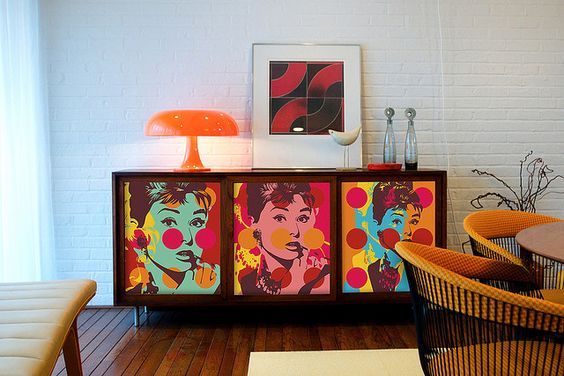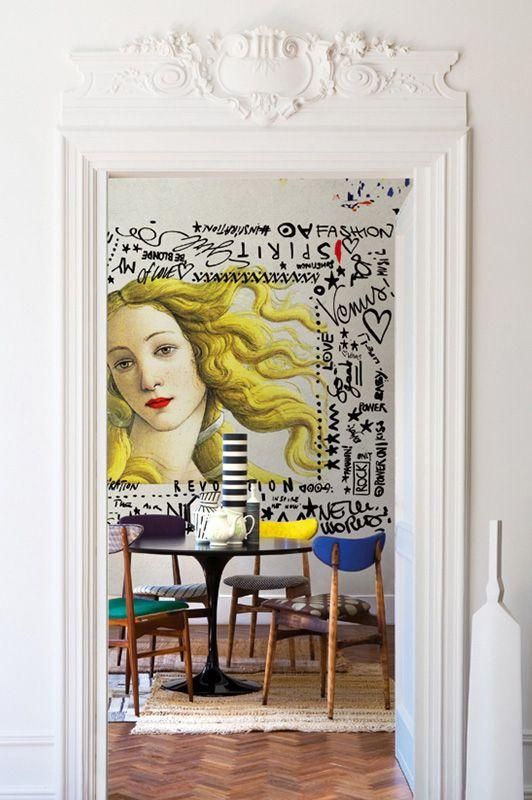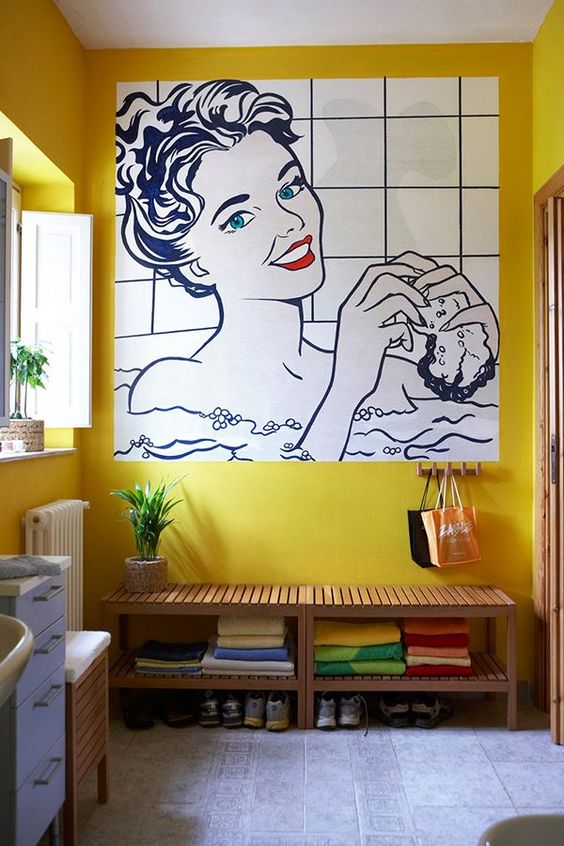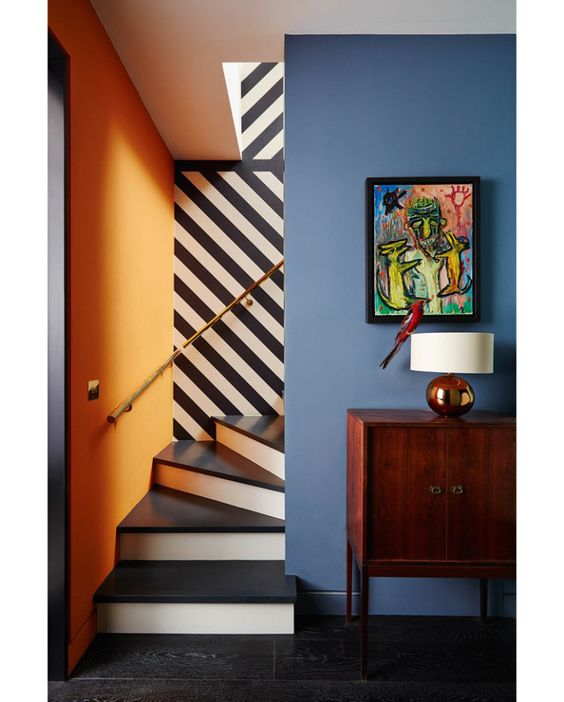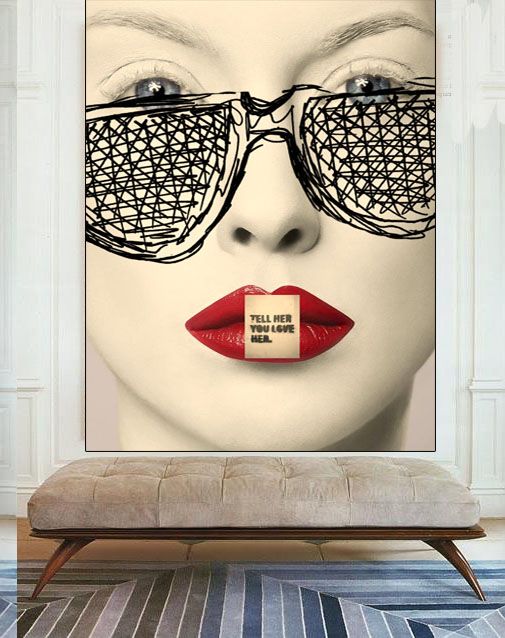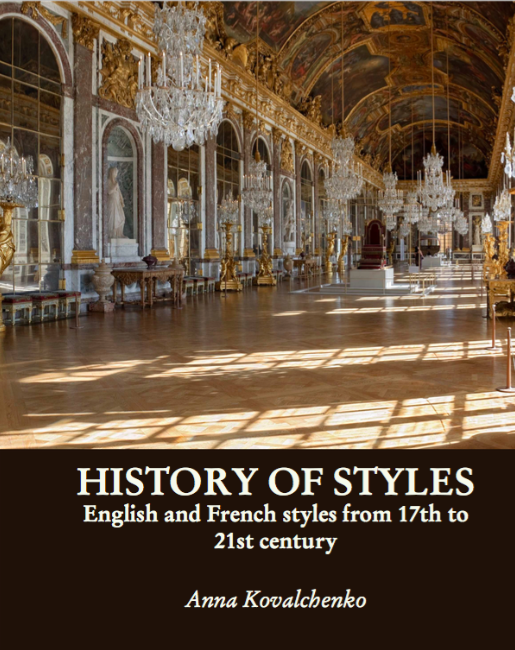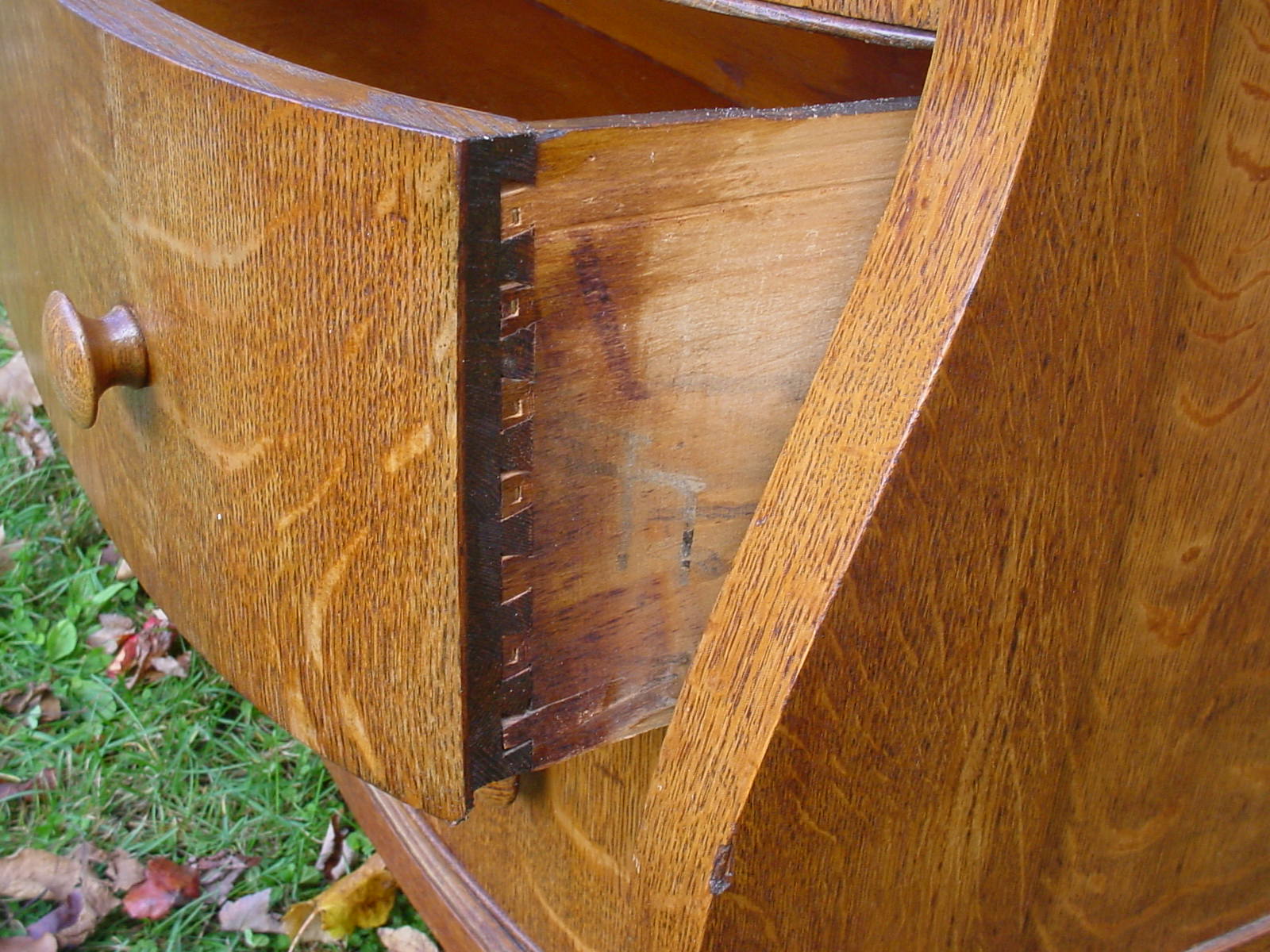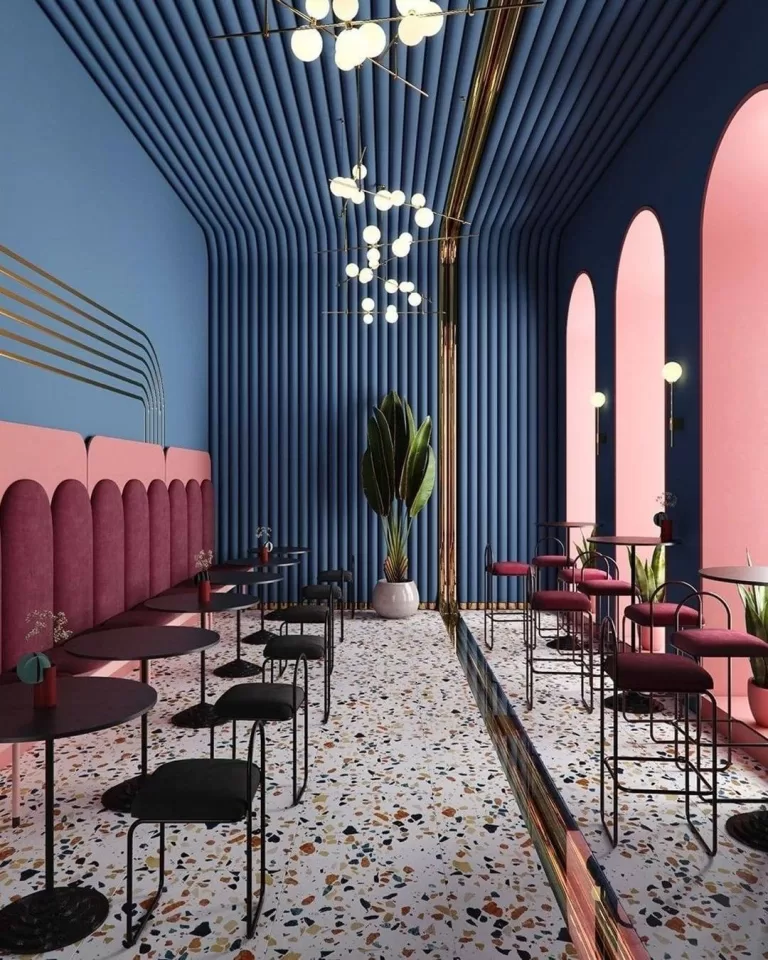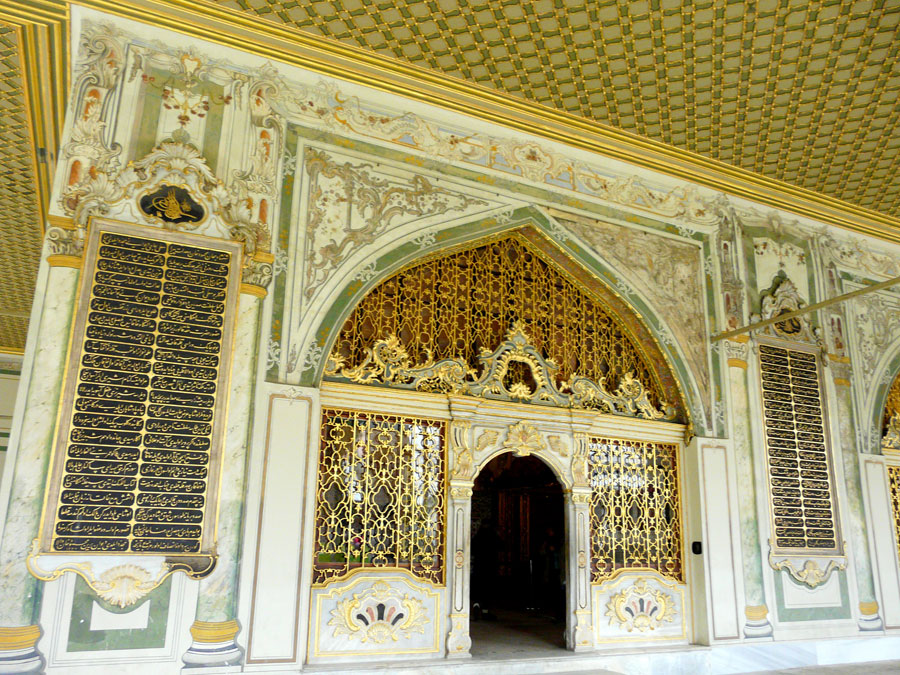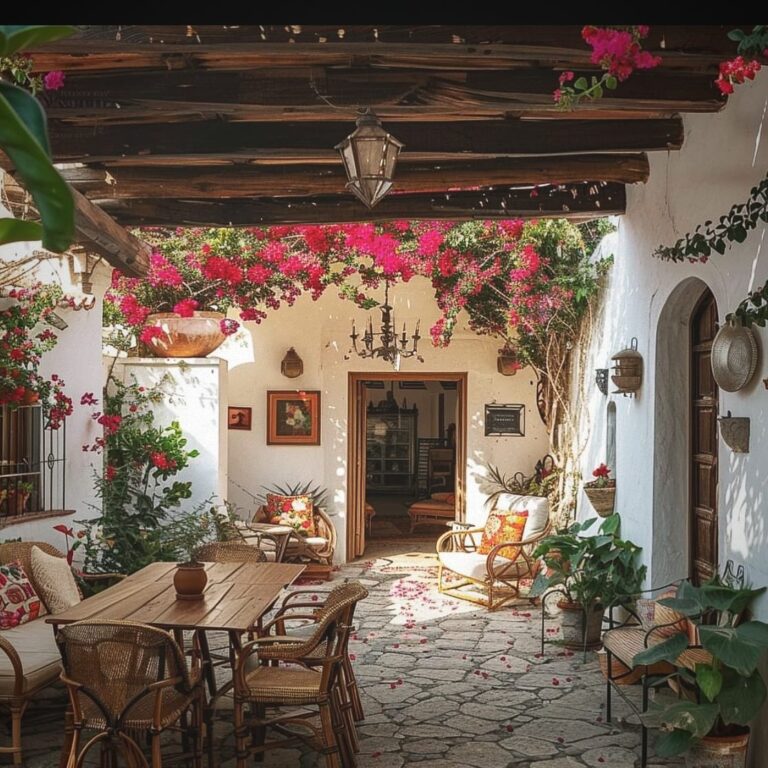Style at a Glance: Pop Art
Pop art was an art movement which emerged in 1950s in Britain and the United States as a reaction to abstract expressionism. The main emphasis was done on constant changes, diversity, fun, rebel spirit, short-life disposable objects and mass consumption.
The most famous works include collages of Robert Rauschenberg – a combination of oil painting and cut-outs from magazines, large scale comics by Roy Liechtenstein, Giant Oldenburg cakes, as well as works by Jasper Jones, James Rosenquist and of course Andy Warhol.

General characteristics:
- Pop art was created to surprise and amuse people. In interior design, pop art looks unusual, expressive, contrasting, bright. The main features include rainbow colors, flashy shapes, the use of plastic, repetitive elements.

2. Pop art openly challenged the principles of “good design”, denied modernism and its values. It has elevated commonplace objects and consumer goods to the level of artworks and then mixed them all in bizarre forms and bright colors. It is as an emotional and energetic style – an explosion of emotions.
3. Furniture in pop art is extraordinary and very catchy. It usually has rounded quirky forms in the “retro futurism” style. Often design incorporates female silhouettes, cartoon characters and images of celebrities. Cabinets are not used in pop art, as this is the biggest element in cluttering the space. It is better to replace them with niches, built-in wardrobes and even podiums. For clothes, it is best to allocate a walk-in closet.
4. Pop art is characterized by the use of repeating motifs: posters, paintings, carpets with geometric prints. Various stylized plastic accessories are also common – watches, photo frames, figurines, vases and lamps. In addition to plastic painted leather and bright metal (e.g. chrome) were widely used. The most unusual objects are in favor, e.g. luminous dishes, a pink toilet bowl, a Superman table lamp.
5. Large scale photographs or paintings that actively exploit images of Coca Cola and Campbell soup cans, as well as faces of celebrities – Marilyn Monroe, Elvis Presley, Mao Zedong;
6. Furniture was characterized by abstract patterns, flashy colors, glossy surfaces and of course plastic materials:
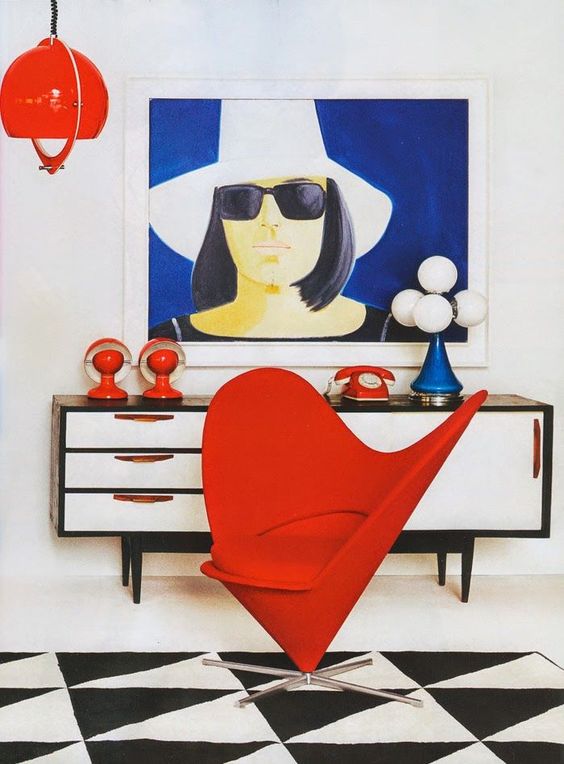
7. Neon colors, comics and lots of interesting decorative details used with no limits, rules or restrictions:
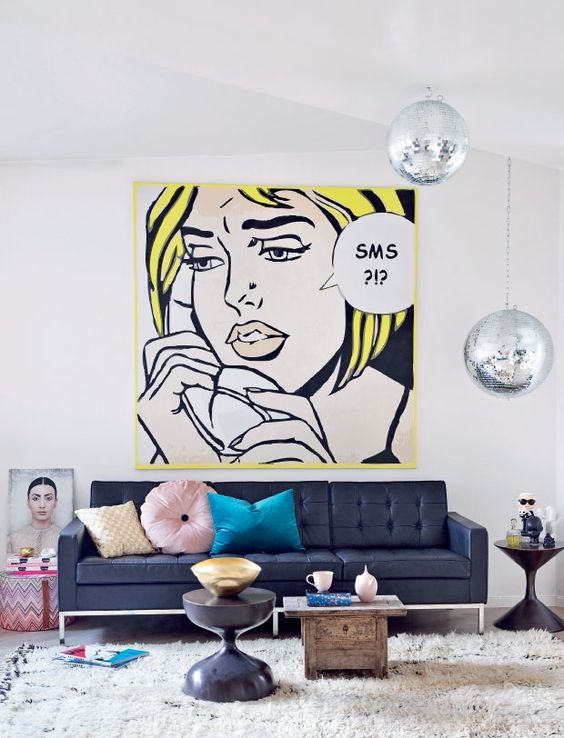
8. Walls are usually bright and combine different colors and patterns. One of the popular solutions is when one wall left white, two others are painted in contrasting colors, and the fourth has repeated pattern.
9. The floor is often left neutral leaving the main role to walls and furniture. Another popular option is carpet with striking geometric pattern.
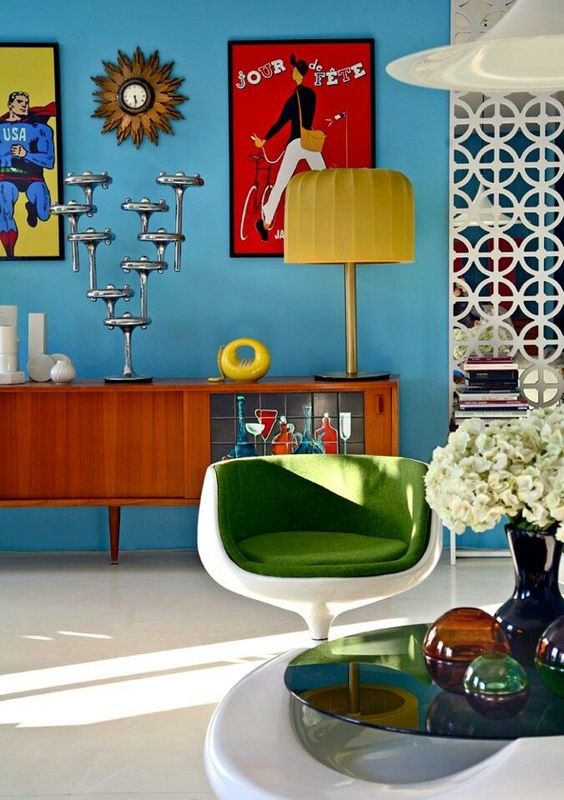
10. Pop art style often incorporates similar to psychedelic visual effects. It can be achieved by using wallpaper with optical illusion or large paintings. Favorite media of artists and designers included collages and stencils.
Want to learn more about various interior styles? Check out my History of Styles eBook – a stunningly illustrated guide to more than three hundred years of shifting trends and innovative developments in the world of interiors.

